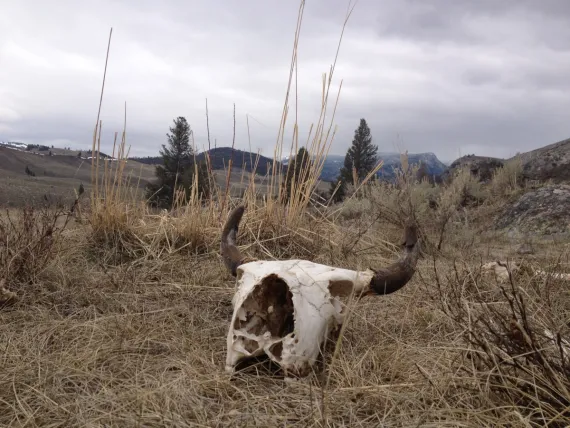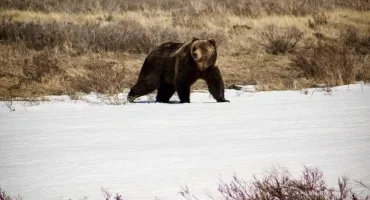Bear and Animal Safety in Yellowstone
Yellowstone is not a petting zoo! All the animals of Yellowstone are wild and potentially dangerous!Stay safe out there by using common sense and exercising caution around wildlife in the park. Here are some suggestions (and the National Park Service agrees):
Basic Tips for Animal Safety in Yellowstone
- Keep a safe distance from all wildlife
- Stay 100m from all bears and wolves
- Keep 25m from all other wildlife. Females with offspring present can be extremely dangerous
- Use roadside pull-outs when viewing wildlife
- Binoculars, spotting scopes, and telephoto lenses help with non-obtrusive wildlife watching
- Never feed animals, for their safety and yours
- Don't crowd or block their natural movement. Often you will get a better view if the animals proceed on course.

Bear Safety in Yellowstone
Yellowstone is home to both black bears (U. americanus) and grizzly bears ( U. arctos). The bears are top of the Yellowstone food chain and masters of their domains. Although big, fury, and bearing sharp teeth and claws, bears are do not like interacting with humans. Unless attracted by food and human garbage, bears will go out of their way to avoid humans.Recommended Tips for Hiking and Backcountry Travel in Bear Country
- Stay alert and be aware of your surroundings.
- Carry bear spray!
- Travel in a group and make noise . Group size should be 3 or more.
- Make noise on the trail. Bear bells are effective but not like clapping or sounds from a human voice.
- If you see bear cubs, the mother is in the vicinity. Be extra cautious!
- Never run. Bears sometimes bluff charge.
- Stay vigilante about food storage
Check Our Yellowstone Tour Options
Book A Tour of Yellowstone National Park










